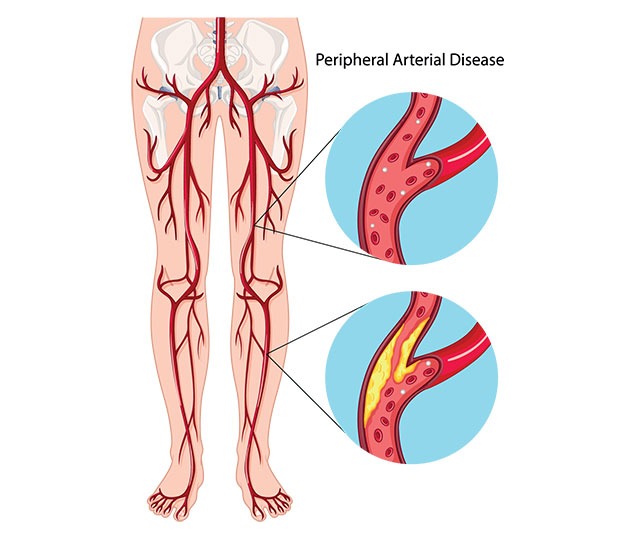
Peripheral Artery Disease is a sign of fatty deposits and calcium building up in the walls of the arteries (atherosclerosis).
- Very Common – More than 3 million US cases per year
- Treatable by a medical professional
- Chronic: Can last for years or life long
- Requires a medical diagnosis
Risk Factors
- Being over the age of 50
- A family history of Peripheral Artery Disease
- Heart disease or stroke
- High levels of homocysteine
- High blood pressure
- High cholesterol
- Smoking
- Diabetes
- Obesity
Symptoms
- Painful cramping in your legs after activities like walking or climbing stairs
- Leg numbness or weakness
- Coldness in your foot or lower leg.
- Non healing sores on your legs, feet, or toes
- Skin discoloration
- Hair loss or slower hair grown on your legs and feet.
- Slowed growth of toenails
- Shiny skin on your legs
- Weak pulse or no pulse in your legs or feet
- Erectile dysfunction in men
